Panoply
Panoply (Greek πανοπλία): Greek name for the full suit of a soldier's armor.
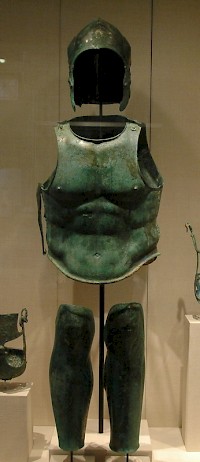
The word panoply is derived from two Greek words, πᾶν and ὅπλον “all arms”. The full armor of a Greek hoplite consisted of a helmet, a cuirass (thorax), a shield (aspis), and greaves, combined with a lance and a sword. Herodotus of Halicarnassus mentions that an Egyptian, who for the first time witnessed soldiers thus equipped, believed that he was watching "men of bronze".note Several centuries later, an eyewitness in Babylon was equally impressed by those "men dressed in iron".note
A panoply was very expensive and it comes as no surprise that after a battle, the victors stripped the defeated enemies of their weapons and armor. The epic poem known as Little Iliad tells how the legendary heroes Ajax and Odysseus quarreled over the possession of the panoply of the dead Achilles, which seems like something that could have happened in a real Greek army as well. The great poets believed that special panoplies had been made by the god Hephaestus (for Achilles in Homer's Iliad; for Memnon in Arctinus' Aethiopis; for Heracles in Hesiod's Shield of Heracles) or the Cyclopes (for Aeneas in Virgil's Aeneid).
Made of bronze, a full panoply was quite heavy and from the sixth century on, the original bronze "bell cuirass" was gradually replaced by a cuirass made of linen (linothorax). The greaves were abandoned by the end of the fifth century. In the second century BCE, the classical panoply, which has been described as "too cumbersome and heavy",note was replaced by the mail armor that is known as lorica hamata.
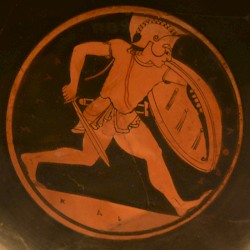 Running hoplite without greaves |
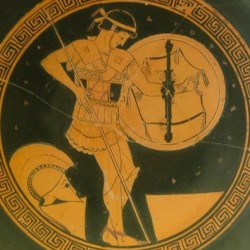 Fifth-century hoplite. |
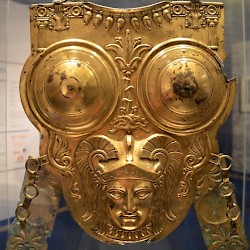 Ksour es-Saf, Carthaginian armor with Athena |
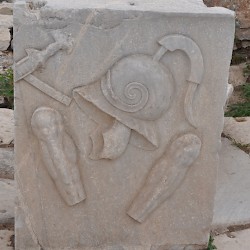 Ephesus, Marble Street, Hellenistic armor |